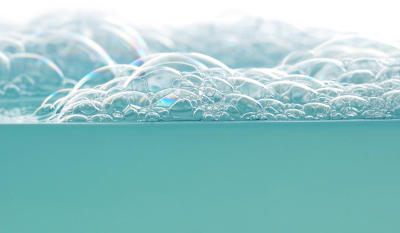This all-technical, three-hour seminar will make you familiar with the many types of old steam heating systems and what goes wrong with them. Dan Holohan’s easy-to-follow...
Foaming and Priming in Steam Boilers

Dry steam is steam with very little liquid water in it. For heating systems, the goal has always been to have 98%-quality steam leaving the boiler. This means that there's not more than 2% liquid water traveling out of the boiler with the steam. The challenge with this, though, is that modern steam-heating boilers are usually smaller than the boilers they replace. They have less internal space for the water to disengage from the steam, and the exit nozzles are often smaller than the nozzles on the old boiler, which leads to higher exit velocities and wetter steam. Some boiler manufacturers compensate for this by providing very specific near-boiler piping instructions. These days, when it comes to steam heating, the piping is a part of the boiler. It serves to dry the steam before it enters the system piping. And the drier the steam, the lower the fuel bills, so please take those piping instructions seriously.
You can also use a drop header to help dry out the steam. Drop headers cost a bit more going in, but they do a great job of drying out the steam and saving fuel. They also have other advantages for the installer because they allow for better approach angles to the steam mains, and more wiggle room in the near-boiler piping when during assembly.
So the goal is to keep the liquid water inside the boiler and send the dry steam into the steam pipes. If your pipes are insulated, more of the steam will reach the radiators and the fuel bills will be lower than they would be if the pipes weren't insulated. Dry steam contains more Btu than wet steam. It's as simple as that, and good piping practices will save fuel.
And watch the boiler's water level. If it gets too close to the exit nozzles, some of the water will leave with the steam. This is especially true of round, horizontal, fire-tube boilers. The closer you get to the top of a circle, the less surface area the steam has to work with inside the boiler. So if you're getting wet steam, look at the feeder and/or pump controller that serves the boiler. Is it at the proper level for that boiler? Did someone raise it? Perhaps to submerge a domestic-hot-water coil? Suspect it because the water level matters.
Beyond that, there are other things that can contaminate the boiler water, causing it to foam and carryover into the system piping. For instance, if there are too many solids in the water, froth will build up on the surface and make it difficult for the steam to escape without taking liquid water along. The solids can be things like oil, grease, organic matter (look inside the pipes before you install them), alkalis, and any other foreign matter that works its way from the piping into the boiler. All of this causes the steam bubbles to get tough and hang together. We call it foaming because that's exactly what it looks like.
And keep in mind the boiler is probably the lowest point in the system. It's going to be the collection point for all of this goop, and some of that will carryover with the steam, reducing the steam's Btu content and increasing the fuel bill. We call that carryover of water "priming."
If the boiler is oversized, or over-fired, it can also prime water into the system. Zone valves on the steam mains can cause priming because when some of those zones are closed, the boiler is effectively oversized. And if they're all closed while the boiler is under pressure, and one opens, some of the water is going to prime up with the rapidly escaping steam. Think about shaking a bottle of club soda and then opening it. And the dirtier the boiler water is the worse things will be.
If you install a new boiler, be wary of the condensate returning from the system during the first few days. A new boiler can act like a scouring pad on an old piping system, and if the condensate carries back solids from the system, the boiler will prime. It's a good idea to temporarily waste that condensate until you can find the source of the solids.
The water's pH also matters. If it goes too high (alkaline) the water will foam and prime. Steam-heating boilers work best with a pH of between 7 and 9. If the pH gets to 11, the water will foam and prime like mad. The Dead Men used baking soda to lower the pH of the water and cure the foaming problem, but there are also commercial chemicals available that can remove foam and make for drier steam.
Leave a comment
Related Posts
We always have turkey for Thanksgiving. I mean who doesn’t? My job wasn’t to cook it, though; it was to eat it.
I had written a story for Plumbing & Mechanical a while back about a fella in Canada who sent me this email: "Our problem is that five out of hundreds of univentilator co...